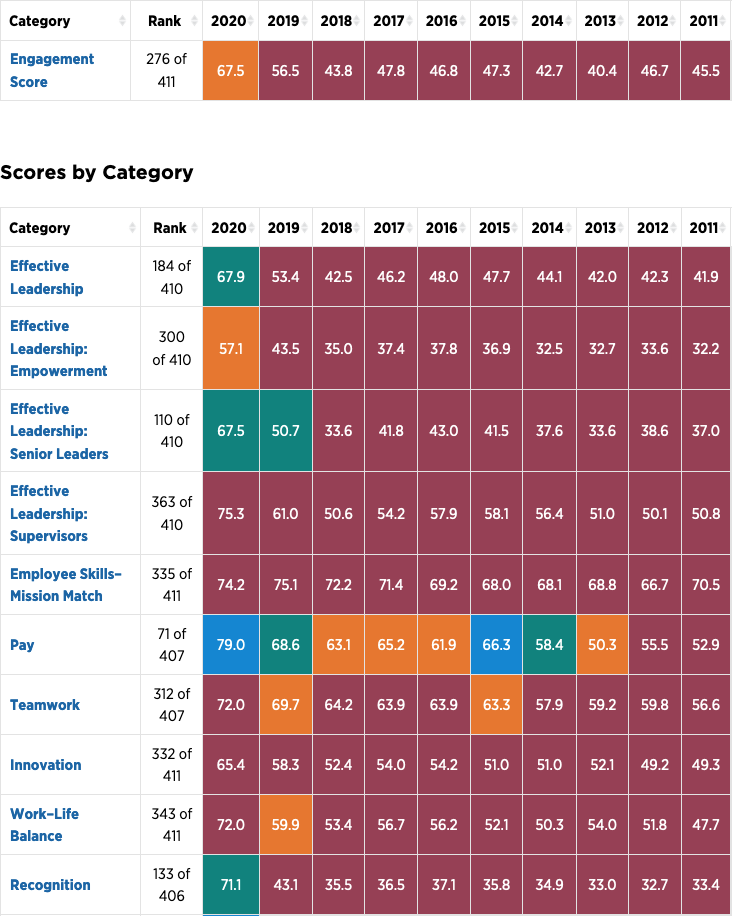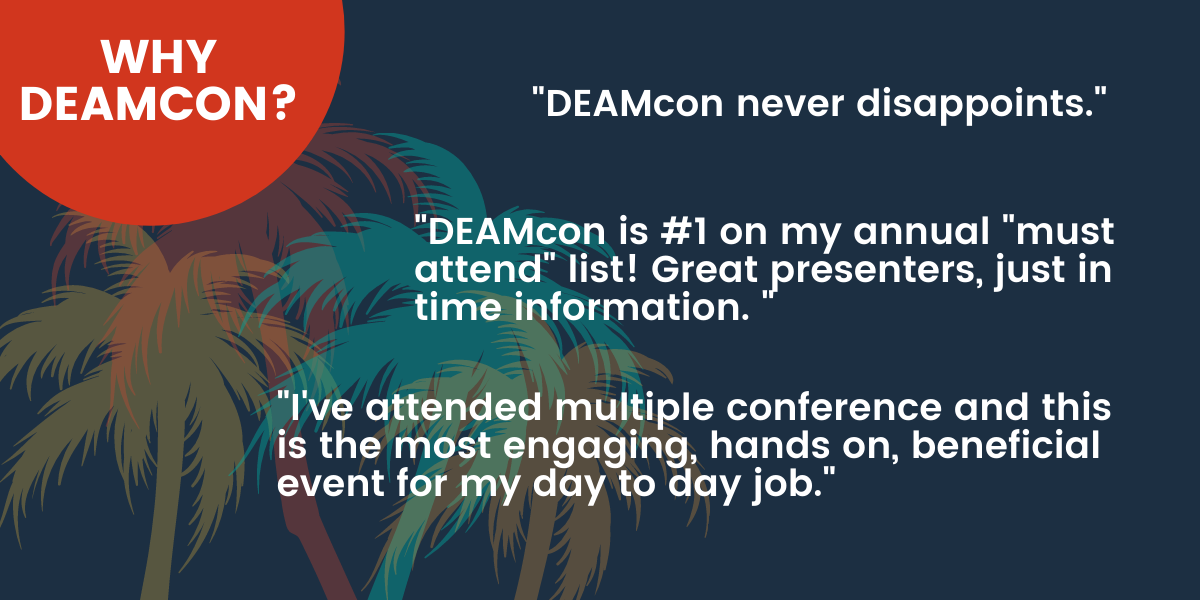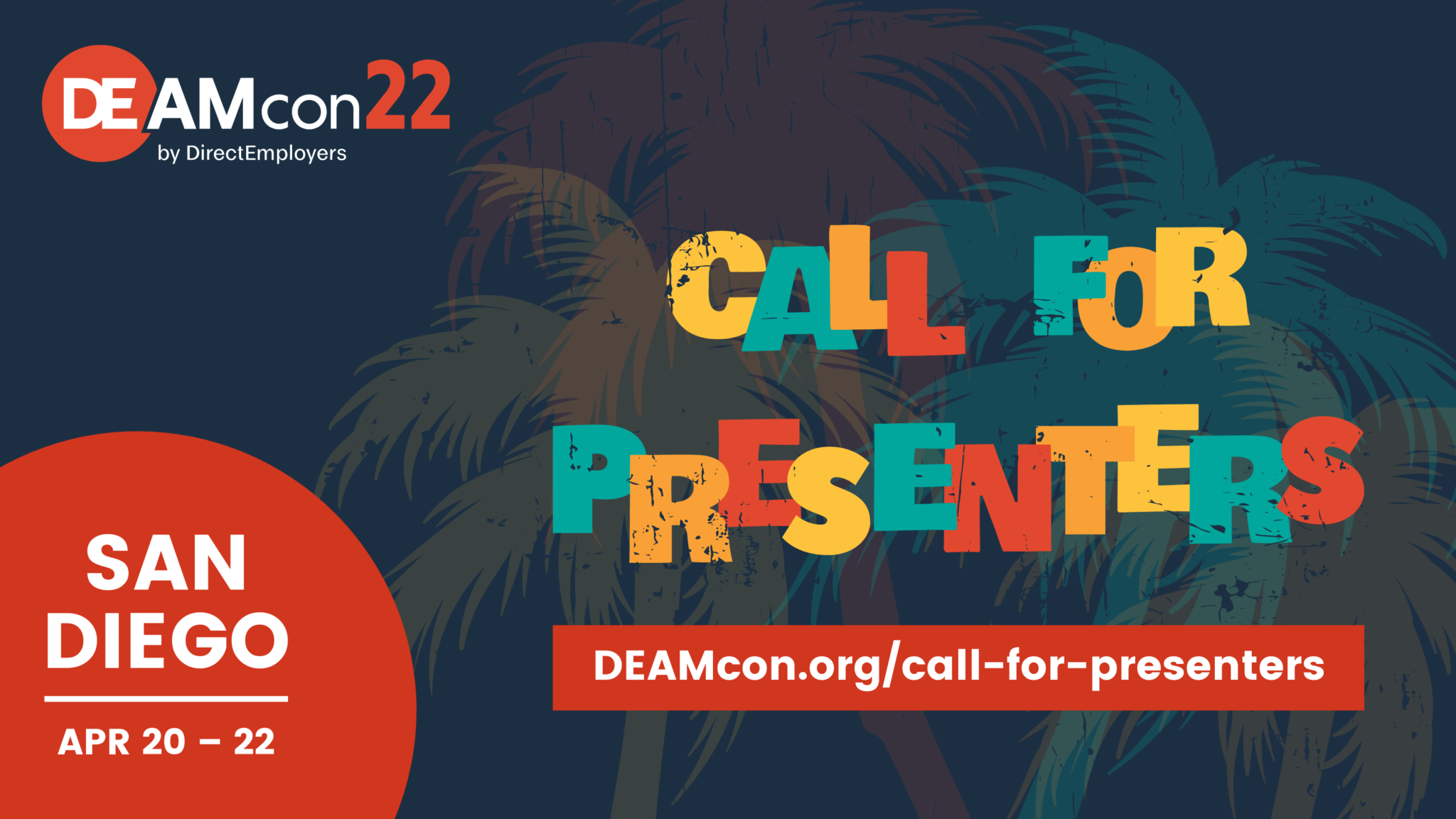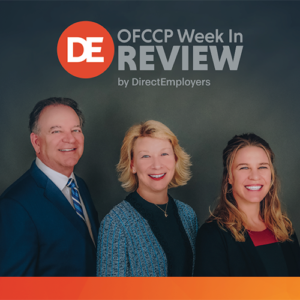
- WAIT! We’ve Seen This Movie Before! New Biden DE&I Order for the Federal Executive Branch Duplicates the Prior In-Force Obama DE&I Executive Order and the EEOC’s Management Directive to All Federal Agencies
- OFCCP Continues Its Climb in Best Places to Work
- EEOC Conciliation Transparency Merry-Go-Round Comes to An End
- Biden Administration Spotlighted Transgender Equality Efforts
- 750 OFCCP Audits Will Tap 276 Federal Government Contractors Out of an Estimated 25,000: Many Contractors Experience the Return of Multiple Audits
- The June Employment Situation: Stock Market Jumps Higher – Five Numbers to Talk About
- The EEOC Extends for 30 Days its Call for Comments on the Uniform Guidelines on Employee Selection Procedures
- Upcoming Event
- Join the Week in Review Team in San Diego for DEAMcon22!
Friday, June 25, 2021: WAIT! We’ve Seen This Movie Before! New Biden DE&I Order for the Federal Executive Branch Duplicates the Prior In-Force Obama DE&I Executive Order and the EEOC’s Management Directive to All Federal Agencies

- Obama Executive Order 13583 (August 18, 2011): “Establishing a Coordinated Government-wide Initiative to Promote Diversity and Inclusion in the Federal Workforce”
- EEOC Management Directive 715: (October 1, 2003)
- Federal responsibilities under Section 717 of Title VII and Section 501 of the Rehabilitation Act.
- This Directive provides policy guidance and standards for establishing and maintaining effective affirmative programs of equal employment opportunity under Section 717 of Title VII (PART A) and effective affirmative action programs under Section 501 of the Rehabilitation Act (PART B). The Directive also sets forth general reporting requirements (PART C). Additional guidance and instructions for implementing the policies set forth herein will be issued separately.
- Biden Executive Order 14035 (June 25, 2021): “Executive Order on Diversity, Equity, Inclusion and Accessibility in the Federal Workforce”
The Biden EO seeks to “reestablish” a coordinated Government-wide initiative to promote diversity and inclusion in the Federal workforce and expand its scope to include equity and accessibility (all three of which, however, are already the subject of the Obama EO and the EEOC Management Directive which remain in force).
Nonetheless, there is one new initiative which the Biden EO directs echoing the occasional Trump OFCCP’s suggestions that federal contractors undertake corporate-wide affirmative action efforts. Specifically, the Biden EO directs the Office of Management and Budget (OMB) and the U.S. Office of Personnel Management (OPM) to work together to create and publish a first-ever Government-wide “Strategic Plan” for DE&I issues.
OPM has reduced to a very succinct graphic display the timelines which EO 14035 imposes for this Government-wide Strategic Plan as well as other tasks the Biden EO requires of federal agencies, and which you may access here.
One especially worrisome passage of the Executive Order causes OMB and OPM to promote to federal Executive Branch agencies “a data-driven approach to increase transparency and accountability…”. [See Sec. 3(b)(iv)] While this reference is rather vague, it will be necessary to see exactly what instructions OMB/OPM promote to the federal agencies as to a “data-driven approach” to DE&I to insure it is not a quota-driven requirement. This is especially of concern given that OMB and OPM have already long been charged to hire, promote, terminate and compensate in a non-discriminatory manner since 1964 through 11 different political Administrations.
A second troubling reference is a definition of the term “equity,” which both OMB and OPM are charged to enforce across all agencies. The definition in the Biden EO conflates non-discrimination with “fair” treatment. However, Title VII courts have uniformly held for decades that employer actions can be non-discriminatory (because uniformly applied) even though they appear to be unfair because harshly applied (to Whites as well as People of Color, and to Men as well as Women). Unfair is not necessarily unlawfully discriminatory under any federal or state equal employment law. Said another way, differential application of a uniform policy or practice based on a protected status is unlawful discrimination, and is also “unfair” … but “unfair” treatment does not make the treatment unlawful unless it is differential based on protected status.
A unique aspect of the Biden EO is the requirement to promote paid internships, as opposed to unpaid internships. The EO thus infuses a labor protection notion into an otherwise well-known affirmative action pipeline and skills building employment process. Federal agencies will be on the lookout for OMB/OPM guidance the Biden EO promises on how to increase the availability of paid internships, fellowships, and apprenticeships.
Other sections of Executive Order 14035 include requirements:
- to track the demographics of the professional development and advancement of individuals into senior positions (and subsequently look to identify and address any barriers);
- to implement or increase the availability and use of diversity, equity, inclusion, and accessibility training programs for employees, managers, and leadership;
- to advance equity for LGBTQ+ employees, including ensuring that existing employee support services, healthcare, and health insurance coverage equitably serve LGBTQ+ employees, that all Federal employees have their respective gender identities accurately reflected and identified in the workplace, to explore opportunities to expand the availability of gender non-binary facilities and restrooms in federally owned and leased workplaces; and
- to expand employment opportunities for formerly incarcerated individuals.
Tuesday, June 29, 2021: OFCCP Continues Its Climb in Best Places to Work
The Partnership for Public Service (PSP) announced the 2020 Best Places to Work in the Federal Government. The rankings include 482 federal agencies and their subcomponent agencies, including the OFCCP and the EEOC, during the last year of the Trump Administration broken down into the following categories:
- 17 “large” agencies (15,000+ employees)
- 25 “midsize” agencies (1,000 – 14,999 employees)
- 29 “small” agencies (100 – 999 employees)
- 411 “subcomponent” agencies (subagencies, bureaus, divisions, centers, and offices within agencies with at least 100 employees: this is where OFCCP lives)
Top of the List (for the 9th year in a row) is NASA. The Department of Labor ranked 18 out of 25 midsize agencies and scored a 69.2% “Engagement score” (the top overall score, defined below). OFCCP’s Engagement Score soared to #276 out of 411 subcomponent agencies under the leadership of former OFCCP Director Craig Leen, as OFCCP leap-frogged to a 67.5% engagement score, up over 41% from the last year of the Obama Administration. (However, read the caveat, below, reporting that the Engagement Scoring changed a bit in 2020 (although the scoring and weighting remained the same through the Obama years and the first three years of the Trump Administration.) In a bright spot for OFCCP, all of OFCCP’s Best Places to Work scores rose dramatically between 2018 and 2020 (the COVID-19 pandemic year) following Leen’s appointment as the OFCCP Director in mid-November 2017. Director Yang took office January 20, 2021 after the reporting period in the 2020 Survey.
The data are interesting not just because they demonstrate that OFCCP employees do recognize differences in leadership, but because they also show that Director Leen first stumbled, from the agency’s perspective, in 2018 (his first full year on the job). But the survey data also show that Director Leen then corrected course (from the agency employee perspective) and OFCCP employee satisfaction markedly increased in 2019. This was the very moment federal contractor representatives began to notice Leen’s shift away from contractor interests to uncritically greenlighting agency discrimination claims.
Employee satisfaction with OFCCP then increased again very dramatically (leaped, really) across all scoring questions during the pandemic year of 2020. OFCCP obviously liked working from home. The “Work-Life” balance attitude of the agency moved up 20% alone in the COVID-19 pandemic year! Similarly, OFCCP’s appreciation of its local supervisors skyrocketed just over 20% in 2020, the year the agency’s Supervisors left their offices and went home.
The Equal Employment Opportunity Commission (EEOC), which has long been perceived to be a well-run federal agency, ranked 13 out of 25 midsize agencies, and scored a 73.3% engagement score—almost an 8% higher evaluation from its employees than OFCCP’s employees scored their agency.
Engagement Score
The Engagement Score determines the overall rankings. The administrators of the Best Places in the Federal Government to work survey calculated the Engagement Score using a proprietary weighted formula that looks at responses to three different questions in the U.S. Office of Personnel Management’s (OPM) Federal Employee Viewpoint Survey (FEVS). The three engagement questions are:
- I recommend my organization as a good place to work.
- Considering everything, how satisfied are you with your job?
- Considering everything, how satisfied are you with your organization?
Overall, the government-wide employee engagement score was 69.0 points out of 100. This score fell short of the private sector, which registered an employee engagement rating of 77.0. The private sector data include more than 8 million survey responses collected between 2016 and 2020 from various companies and industries.
Where Did the Data Come From?
The administrators of the survey gathered information between mid-September and early November of 2020, during Craig Leen’s tenure as OFCCP Director. 59% of respondents reported that they teleworked every day during the COVID-19 pandemic’s peak, compared to just 3% before the COVID-19 pandemic gripped the United States in mid-March 2020. The survey went to all full and part-time, permanent, nonseasonal Executive Branch employees. The response rate was 44.3% across all reporting agencies, as 624,800 federal employees completed the survey. This is a 1.7-point increase from 2019. The FEVS methodology is available on OPM’s website.
Note About 2020 Data
In 2020, the Survey administrator changed how it calculated the percentage of positive responses to the FEVS questions. Therefore, the Survey Administrator warns that the 2020 scores should not be directly compared to scores from previous years. For more information, see the Methodology section.
Wednesday, June 30, 2021: EEOC Conciliation Transparency Merry-Go-Round Comes to An End

In his remarks, President Biden stated (about signing the bill to dissolve the Final Rule),
“…the *** bill is going to help us hold employers accountable for workplace discrimination. As a nation, we continue to strive toward realizing our founding principle that all people are created equal and have a right to full access to the American Dream, and that includes at work — at work. That’s why we have the Equal Employment Opportunity Commission, which enforces the law that makes job discrimination illegal…
The last administration put in place a rule that makes it harder — makes it harder for those seeking redress for job discrimination to get justice. With this law, we’re going to move in the direction of greater accountability, fairness, and justice.”
How We Got (Back) Here
A series of right turns took us back to the beginning. It started in August 2020 when “EEOC Republican Commissioners Vote for Transparency; Lone Democrat Commissioner Dissents.” Then in January 2021, we saw the publication of the Final Rule, effective February 16, 2021. See “EEOC Final Rule on Its Conciliation Process Moves in the Direction of Employers, but is Ultimately Disappointing.” However, by March, we took a right turn when “Congressional Democrats Introduce Resolutions to Rescind the EEOC’s Final Rule Requiring Transparency to Employers in Conciliation of Charges.” Then another right turn in May when the “U.S. Senate Voted to Overturn the EEOC’s Recent Conciliation Process Transparency Reforms,” and another right turn last week when, “In Blow to Federal Agency Transparency, Congress Overturns New (Trump era) EEOC Conciliation Process.” Both the Senate and House votes followed along political party lines, but passed in the Senate because such procedures require only a mere majority. President Biden made the final right turn by signing the resolution to dissolve the Rule, putting us right back at the beginning with the original pre-Trump conciliation rules back in place.
Wednesday, June 30, 2021: Biden Administration Spotlighted Transgender Equality Efforts

- hosting a White House virtual convening on transgender equality,
- creating a White House-led interagency working group on safety, inclusion, and opportunity for transgender Americans,
- taking steps to expand the availability of accurate Federal IDs for transgender, gender non-conforming, and non-binary Americans,
- making the Federal government a model employer for transgender public servants,
- expanding comprehensive gender-affirming care for our Nation’s veterans,
- releasing a toolkit on equality and inclusion for transgender Americans.
Thursday, July 1, 2021: 750 OFCCP Audits Will Tap 276 Federal Government Contractors Out of an Estimated 25,000: Many Contractors Experience the Return of Multiple Audits

- 668 Establishment-based “full” Compliance Reviews
- 57 Functional Affirmative Action Program (FAAP) Reviews
- 19 Corporate Management Compliance Evaluations (CMCEs) or “glass-ceiling audits” (Note: Only establishments identified as headquarter locations in the EEO-1 report with 300 or more employees were considered for CMCE reviews)
- 6 “University Reviews” (which technically do not exist as a separate regulatory species of audit and which are, in reality, full Compliance Reviews of “Supply and Service” contractors…historically considered Supply and Service audits because institutions of higher learning provide the “service” of education).
Following the trend instituted by former Director Ondray Harris following an on-site Listening Session with DirectEmployers Members, the scheduling methodology is again available for review. Highlights include the:
- exclusion of establishments on the 2020 List (and presumably, too, the 2019 CSAL since OFCCP is still starting audits from that earlier CSAL). (Note: OFCCP does not purge unscheduled or unfinished reviews from prior CSALs before releasing a new CSAL);
- exclusion of establishments with contracts set to expire before September 30, 2021;
- selection of establishments with “large employee counts,” harking back to a Reagan Administration audit ordering scheme;
- limit of no more than nine establishment reviews of any one parent company during this audit cycle;
- limit of no more than three FAAP audits per parent company
- limit of no more than two establishment/FAAP reviews from the same parent company per OFCCP District Office;
- limit of one CMCE per District Office; and
- limit of one full establishment review of an institution of higher learning per OFCCP Region.
Now What?
The CSAL provides contractors a courtesy notice of at least 45-days to prepare for a coming OFCCP Compliance Evaluation. This means that the Audit Scheduling Letters for this new CSAL may go out as early as August 14, 2021. DirectEmployers Members, your Membership Representative will contact you in preparation for your audit. Non-Members, if you are looking for audit support now or in the future, you may reach out to DE through its Taapestry Group. If you believe an establishment is on the List in error, contact OFCCP at ofccp-dpo-scheduling@dol.gov.
Friday, July 2, 2021: The June Employment Situation: Stock Market Jumps Higher – Five Numbers to Talk About

See President Biden’s remarks and U.S. Secretary of Labor, Marty Walsh’s comments on the June employment report.
| The Employment Situation – June 2021 | |||
|---|---|---|---|
| Unemployment Rate | June 2021 | May 2021 | June 2020 |
| National (Seasonally adjusted) |
5.9% | 5.8% | 11.1% |
|
Women (20+) |
5.2% 9.2% 5.8% 7.4% 5.9% 5.5% |
5.1% 9.1% 5.5% 7.3% 5.9% 5.4% |
10.1% 15.3% 13.9% 14.5% 10.2% 11.3% |
| Veterans (Not seasonally adjusted) |
4.8% | 4.1% | 8.6% |
| Individuals with Disabilities (Not seasonally adjusted) |
10.9% | 10.2% | 16.5% |
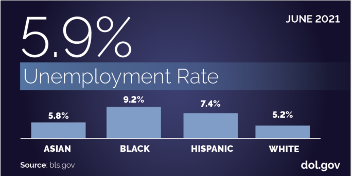
- 567,000 = the average number of jobs added to the economy over the past three months
- 2% = the unemployment percentage for blacks
Jones reminds us “As we invest in America’s workforce, we must also work to address the longstanding and persistent systemic inequities.”
- 8% = the number of unemployed people plus those who are marginally attached to the labor force (they are not working or looking for work but want a job) plus those employed part-time for economic reasons
“This is the broadest measure of how workers are faring in the economy, which is referred to as U-6. This month the percentage of people in this category fell to 9.8% – the first time it has been below 10% since the pandemic began. This is good news because often these groups are the last to feel the effects of recovery.”
- 4% = the increase in average hourly earnings over the past three months
“This is the biggest three-month increase we’ve seen during any pre-pandemic period since 2006. This is great news for workers, especially those who have suffered stagnant wages for years.”
- .4% = the increase in the labor force participation rate for prime-aged women (25-54)
Tuesday, July 2, 2021: The EEOC Extends for 30 Days its Call for Comments on the Uniform Guidelines on Employee Selection Procedures

The initial 60-day comment period opened in May. See our story, “Is the Cost of 13 Keystrokes an Accurate “Burden” of the Uniform Guidelines on Employee Selection Procedures”? The EEOC reports that it received only one comment. Accordingly, the Commission opened its comment period for another 30-days. To see a breakdown of the calculation of cost burdens, see our previous story.
Comment by August 5, 2021.
Upcoming Event
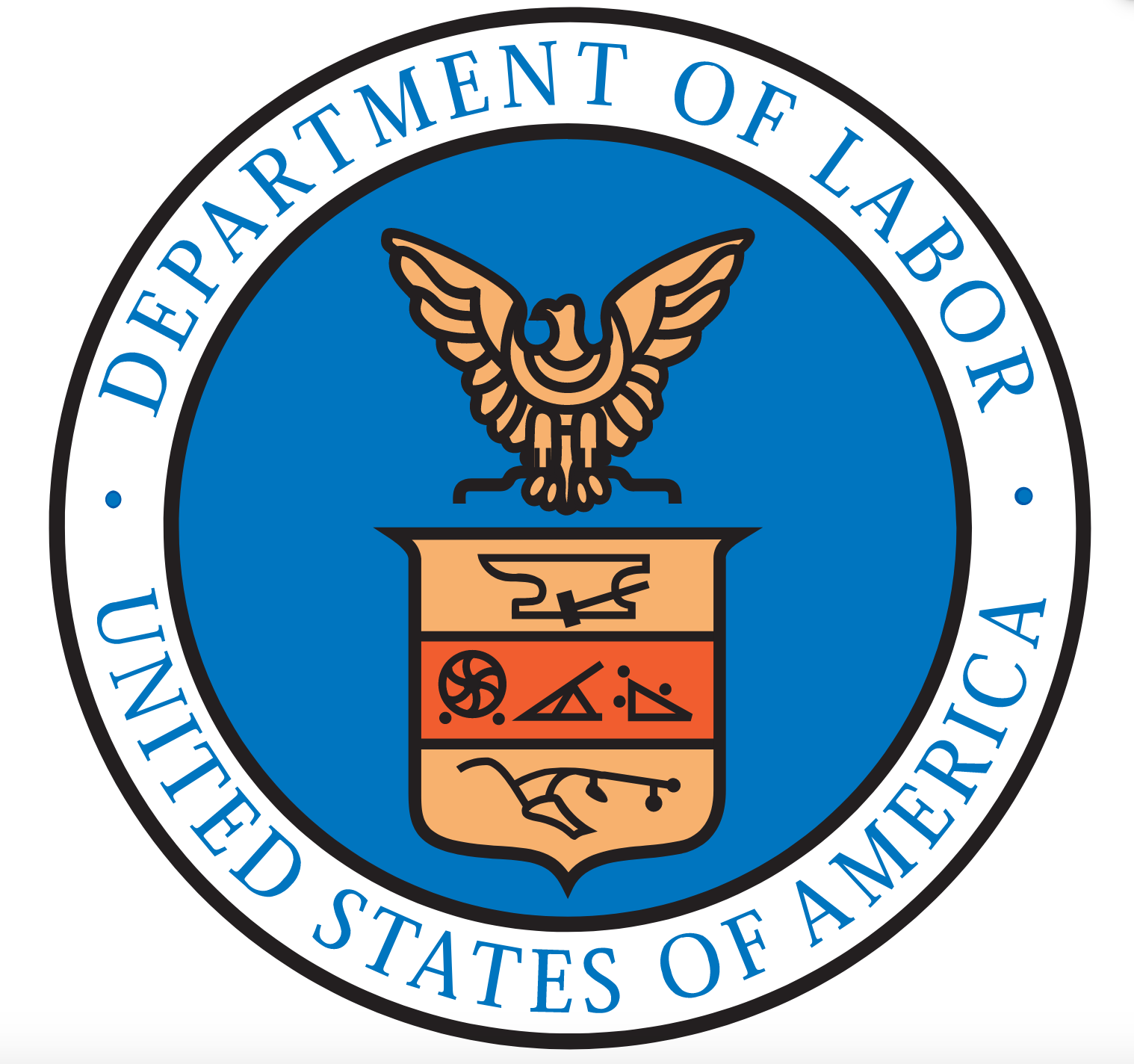
Event Details
- Wednesday, July 7, 2021, from 2:00 to 3:00 pm EST
- Join on Twitter at @ePolicyWorks and use #EPWChat to follow along
The event will feature tools, resources, and supports women in employment may need to thrive post-pandemic.
Join the Week in Review Team in San Diego for DEAMcon22!
We know our readers are the most experienced when it comes to OFCCP compliance. Sharing these experiences allows us all to expand our real-world knowledge and prepare us to excel in our various compliance, recruitment, and DE&I roles.
A huge benefit of our conference (and what makes it so great!) is that the majority of our content is focused on peer-to-peer learning. In other words, along with a few experts here and there, our presenters are mostly HR practitioners who are sharing their successes, best practices, and lessons learned on a variety of topics relating to OFCCP compliance, recruitment marketing, and DE&I. Through this blend of learning, DirectEmployers Annual Meeting & Conference offers attendees richer, more in-depth, and engaging EEO and compliance content to ensure the maximum level of education available.
Don’t take our word for it, hear straight from attendees:
See some of the topics we love to explore and discuss during our time together (in addition to enjoying the sandy beaches, spa indulgences, and golfing fun)! Join us next April on the San Diego coast of Carlsbad at the five-star resort, the Park Hyatt Aviara!
THIS COLUMN IS MEANT TO ASSIST IN A GENERAL UNDERSTANDING OF THE CURRENT LAW AND PRACTICE RELATING TO OFCCP. IT IS NOT TO BE REGARDED AS LEGAL ADVICE. COMPANIES OR INDIVIDUALS WITH PARTICULAR QUESTIONS SHOULD SEEK ADVICE OF COUNSEL.
SUBSCRIBE.
Compliance Alerts
Compliance Tips
Week In Review (WIR)
Subscribe to receive alerts, news and updates on all things related to OFCCP compliance as it applies to federal contractors.
OFCCP Compliance Text Alerts
Get OFCCP compliance alerts on your cell phone. Text the word compliance to 55678 and confirm your subscription. Provider message and data rates may apply.

